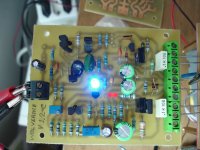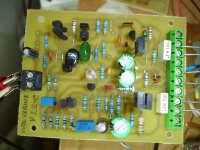Post #1642Your link is broken. What post #?
Wolverine 1.2-C
Wolverine is something was absent from my collection.
Now it's here.!
Up to now i have test only bandwidth from this amplifier.
3.6Hz up to 411Khz (-3db) tested at 5vRMS OUT/6R dummy load.
Wolverine is something was absent from my collection.
Now it's here.!
Up to now i have test only bandwidth from this amplifier.
3.6Hz up to 411Khz (-3db) tested at 5vRMS OUT/6R dummy load.
Attachments
Last edited:
Doing something like this need some work .....but i can do it.Dear thimios...
Would you please post a link to complete package to all of your IPS you've build.
Thank you.
Last edited:
I see your smps,i want to build something like this but diy transformer is something difficult for me..Thankyou very much thimios... i like to build all IPS that you've build.
I have build stereo NAD-H Slewmaster. I have 2 diy SMPS 60vdc and 75vdc supply ready.
I have never wind conventional transformers also.It much more easy to wind smps transformer than wind conventional transformer for me.
Hello all,
I´ve been playing around with my CFA-XH for a while now and This is slowly getting better and better.
I would like to emphasize the following advice given by Esperado, since it has provided a lot of improvement on the sound.
Once the thing is stable I recommend to play around with the input filter cap value. It really makes a significant difference!
At the beginning when my amp was stable and behaving well according to a scope I felt like there was a little extra energy or "sizzle" at the top octave which began to be annoying at some records. Increasing the value from 100p to 200p made a significant difference for the sound. Now the top octave is nice and sparkling without annoyance.
Thanks again E.
Jarno
I´ve been playing around with my CFA-XH for a while now and This is slowly getting better and better.
I would like to emphasize the following advice given by Esperado, since it has provided a lot of improvement on the sound.
You can try this:
- Plug your cable in the inputs.
- Remove C12.
- Tune C1 & C18 to have no oscillation and a flat bandwidth at HF (no peak in the response curve).
- Plug-in a square wave generator @ 50Khz to your cable.
- Replace C12 and tune it to have no peak in the square waves.
This will be you minimal C12 value, that you can increase for best listening results.
Once the thing is stable I recommend to play around with the input filter cap value. It really makes a significant difference!
At the beginning when my amp was stable and behaving well according to a scope I felt like there was a little extra energy or "sizzle" at the top octave which began to be annoying at some records. Increasing the value from 100p to 200p made a significant difference for the sound. Now the top octave is nice and sparkling without annoyance.
Thanks again E.
Jarno
Hello all,
I´ve been playing around with my CFA-XH for a while now and This is slowly getting better and better.
I would like to emphasize the following advice given by Esperado, since it has provided a lot of improvement on the sound.
Once the thing is stable I recommend to play around with the input filter cap value. It really makes a significant difference!
At the beginning when my amp was stable and behaving well according to a scope I felt like there was a little extra energy or "sizzle" at the top octave which began to be annoying at some records. Increasing the value from 100p to 200p made a significant difference for the sound. Now the top octave is nice and sparkling without annoyance.
Thanks again E.
Jarno
May I ask you to explain your physical method for "tuning" C2? Did you actually remove and replace various caps until you found the one that "sounded" the best to you?
Thanks, Terry
May I ask you to explain your physical method for "tuning" C2? Did you actually remove and replace various caps until you found the one that "sounded" the best to you?
Thanks, Terry
Hello Terry,
I hope I can explain this properly since I do not have photos.
I have an 8 pin IC socket in which I have soldered the rows of four together onder the socket and the extra leads from the rows taken from cutted resistor legs.
I solder the legs on the pcb together with the IC socket and then I just keep plugging caps in parallel into the socket and give a listen.
If my text is hard to understand I can try to draw an image.
After I am done I find a cap closest to the value of parallel caps and put that on the pcb.
Jarno
I bought a bunch of variable caps a couple of weeks ago. 50pcs 120pF Adjustable Capacitor 25pF 120pF 100V Ceramic Trimmer Capacitors 3530 | eBay
I tried some of them out on an IPS I built. The problem I had was that I can set them with my capacitor meter but once installed, it can't read them any more. If I'm understanding jarkaa, he tuned by ear. That is interesting. I'll have to try that sometime on one of the IPS I have.
I tried some of them out on an IPS I built. The problem I had was that I can set them with my capacitor meter but once installed, it can't read them any more. If I'm understanding jarkaa, he tuned by ear. That is interesting. I'll have to try that sometime on one of the IPS I have.
System tuning not a general amp device tuning, change source and/or speaker and tuning needed again to reach best possible pleasing sound for new source/load. Think sometimes a good pushbutton for a diy to raise SQ...........If I'm understanding jarkaa, he tuned by ear. That is interesting. I'll have to try that sometime on one of the IPS I have.
Edit: Have a feeling this higher quality amp in the long run will benefit a better quality input filter cap than a trimmer capasitor (used for tuning to right value only).
Last edited:
Without a doubt, speakers have the biggest impact on audible differences. I can go through all my amps in my A/B setup and the differences are so minor it is nearly impossible to pick one from the other, but going through the dozen or so different speaker pairs I have and the sound is night and day. Most but not all of the amps I own are in my signature. Here is a list of some of the speakers I have readily available. Most are oldies but goodies.
JBL: 4425, 4412, 4312, 4408, EON
Yamaha: NS-10, NS-1000
Tannoy PBM 6.5II
Dynaudio BM6
Event 20/20
Boston Acoustics; A100, HD7
Each of them have their own sound signature. YMMV
JBL: 4425, 4412, 4312, 4408, EON
Yamaha: NS-10, NS-1000
Tannoy PBM 6.5II
Dynaudio BM6
Event 20/20
Boston Acoustics; A100, HD7
Each of them have their own sound signature. YMMV
Without a doubt, speakers have the biggest impact on audible differences. I can go through all my amps in my A/B setup and the differences are so minor it is nearly impossible to pick one from the other, but going through the dozen or so different speaker pairs I have and the sound is night and day. Most but not all of the amps I own are in my signature. Here is a list of some of the speakers I have readily available. Most are oldies but goodies.
JBL: 4425, 4412, 4312, 4408, EON
Yamaha: NS-10, NS-1000
Tannoy PBM 6.5II
Dynaudio BM6
Event 20/20
Boston Acoustics; A100, HD7
Each of them have their own sound signature. YMMV
Hi Terry,
Just curious if the sorting of the list of your speakers has anything to do with the best speakers from the top and not so best to the bottom?
Can you give us some of that clue?
Regards.
I didn't mean to put them in order of quality. I started with the ones in view and tried to group them in brand name. The JBL 44xx are probably my favorites. They have clear highs and great bottom end. The Yamahas are nice but make up my surround sound system in the living room these days. The Dynaudios are very nice for nearfield work. The Dynaudios, Events, Tanoys, and NS-10s were all purchased when I had a home studio. Each had a signature that helped when mixing a particular type of recording. Voices, drums, guitars, etc. I'm not sure one is "better" than another, just different. The Boston's are a really nice bookshelf for the price but more colored than the others.
Hope this helps.
Blessings, Terry
Hope this helps.
Blessings, Terry
- Home
- Amplifiers
- Solid State
- Slewmaster - CFA vs. VFA "Rumble"

